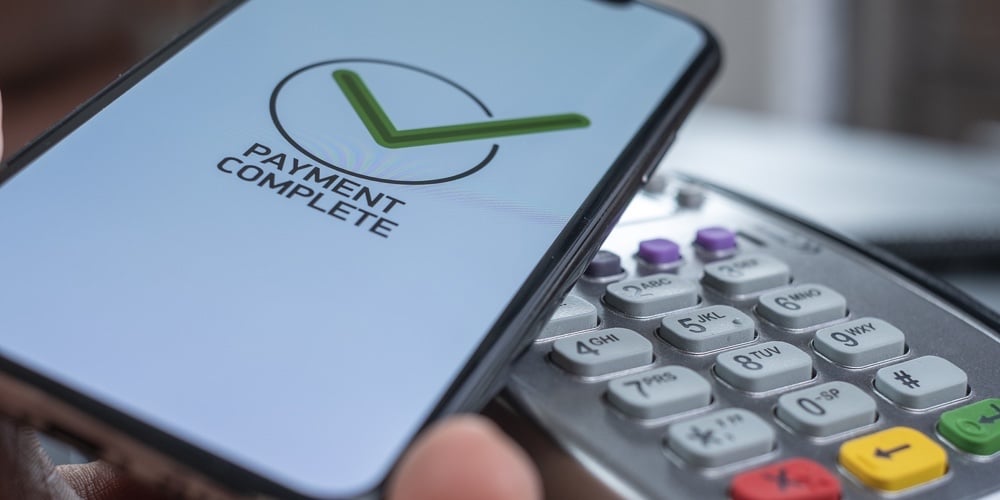Digital payments solutions for a post-coronavirus world

It’s becoming clear that the coronavirus is going to have a lasting effect on our lives. Even as social distancing measures begin to ease across the country, we’re starting to realize that we won’t be returning to the world we were used to, but will be navigating a “new normal” going forward. For credit unions, this is going to mean adopting forward-thinking payments strategies that empower your members to make payments and access their accounts safely and conveniently. The shift to self-serve banking options has reached a tipping point, and credit unions that are ahead of this curve will be far more likely to find success in an uncertain future.
Meeting your members where they are
Even before the coronavirus disruptions began, consumer preferences had started to migrate from traditional payment methods toward digital payments options. Advances in mobile payment technology and an increase in new payments channels, combined with overall consumer trends that favor accessibility and convenience, have shifted consumers’ purchasing habits.
The coronavirus and its immediate aftermath have only served to make this shift more relevant to credit union members. Now more than ever, credit unions should be implementing consumer-centric payments solutions that put members in the driver’s seat. Developing a payments strategy that allows your members to access your services from a variety of different channels, including your website, a mobile app, an online payments portal, social media networks, call centers, and physical branches, will empower your members to choose the payment options that work for them. Your members will appreciate the availability of multiple payments channels that give them the flexibility to utilize the best choice based on their needs at any given time.
Making payments options mobile
According to Pew Research, “The vast majority of Americans – 96% – now own a cellphone of some kind. Along with mobile phones, Americans own a range of other information devices. Nearly three-quarters of U.S. adults now own desktop or laptop computers, while roughly half now own tablet computers and roughly half own e-reader devices.”
These numbers reveal an interesting fact. It has become clear that in order to successfully reach your members, you must provide tools and services that are accessible via mobile devices. Generally speaking, credit union members expect their mobile experience to be just as seamless as their desktop experience. If your credit union has developed an app for your members, you’ll want to make sure that the interface is intuitive, accessible, and provides a wide variety of self-serve features.
Mobile payment apps and overall online experience should be viewed as an extension of your credit union’s member service. Your mobile experience should offer comparable functionality and have a similar “feel” as your overall member service experience.
Adapt physical channels
With the benefit of web-based technology, many of us have been able to adjust fairly easily to working from home, ordering food, groceries, and shopping online, and even educating our kids through eLearning platforms. As we continue to move forward toward the new normal, consider rethinking the importance of physical brick-and-mortar branches. Regardless of whether it’s in the form of digital or physical, consumers are attracted to high-quality and engaging experiences. While it may not be feasible to provide stellar face-to-face service with the country still largely shut down, it is still possible to build deeper relationships with your members by focusing on developing digital payments tools and channels with the end user in mind.
Having a smaller customer support staff on site or in call centers to help your members with support and services is a challenge that all credit unions are facing. According to The Financial Brand, since the coronavirus, “Bank and credit union customer support has been overtaxed by the extraordinarily high volume of questions from anxious, frustrated consumers.”
Providing exceptional member support from contact centers is going to become critically important over the next several months and into 2021. One component of that is reducing the inbound call volume and call processing time. Prior to the outbreak of the coronavirus, Financial Center First launched a new eServices platform that allowed their members to make loan payments from an online portal. According to Marla Tackett, Vice President of Strategic Development at the credit union, since diversifying their payments platform, they now “have shorter wait times and are better able to serve members who are calling for non-transactional requests.”
The coronavirus and its aftermath have created a great deal of uncertainty for people, especially when it comes to their financial wellbeing. Your members are likely going to be reaching out to you more often for help with financial services going forward. Diverting as much call traffic as you can for actions that members can self-serve on will help you provide the members that have more complex concerns with the best service possible.
Adapting to the myriad of coronavirus-related disruptions while continuing to provide excellent service is a difficult challenge that credit unions are facing today. While this can seem like a tall order during a time when in-person interactions are limited, providing your members with payments channels they can access safely and conveniently from the comfort of their homes will add value to their banking experience at a time when every little bit helps.
To learn more about how Financial Center First increased their total funded transactions through self-service channels by 161%, download the case study.





